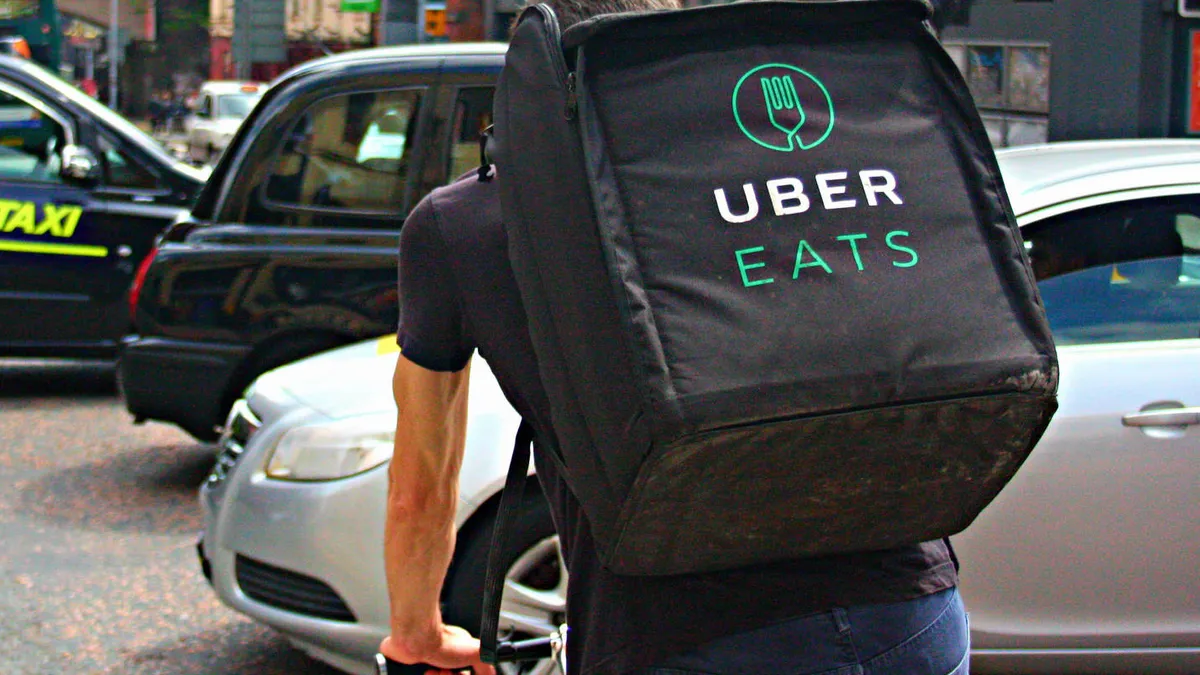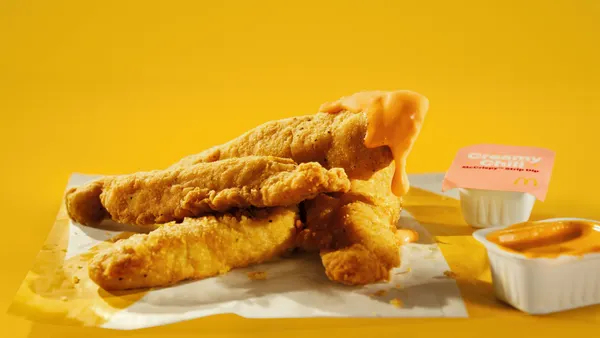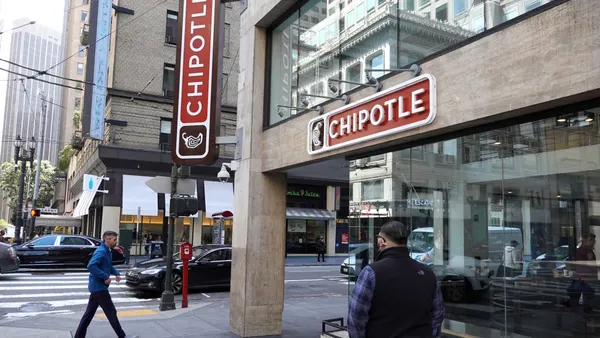Dive Brief:
- A new study from E-Poll Market Research shows that Grubhub is the top third-party food delivery service with millennials, with a 41% usage rate among those consumers. Doordash was second (36%), followed by UberEats (32%) and Postmates (30%). Grubhub is also the most used delivery app across the board, at 36%, and with the company's recent acquisition of Yelp's Eat24 app, that usage is likely even higher now.
- Younger U.S. internet users are most likely to use a food delivery service: A majority (55%) of those aged 18 to 24 and close to half (49%) of 25- to 34-year-olds had food delivered at least once in the past year compared with the overall average (36%).
- Despite growth in the third-party delivery space, most consumers still order food directly through a restaurant brand (53%).
Dive Insight:
This research echoes a recent TrendSource survey that also shows U.S. consumers are more interested in restaurant brands' apps to order delivery and pickup versus third-party apps. This proves that, while the third-party food delivery space continues to grow at a staggering pace, consumers continue to rely on their trusted restaurant brands to place their orders. After all, McDonald's has had 63 years to embed itself in our lives, while its delivery partner, UberEats, hasn't even been around for a decade.
That's not to mention the marketing disparities between the companies (McDonald's ad budget is about $2 billion). Simply put: McDonald's is a longtime, top-of-mind, habitual brand, while UberEats is an enabler of that habituation.
Time will tell if those ordering habits will shift and if consumers will start to instinctively order through third-party apps. What’s clear is that delivery isn't going away, and restaurant brands have to figure out how it best fits into their system — on their own or through a third-party aggregate. Despite the stagnation in the U.S. restaurant industry, foodservice delivery posted sizable gains in both visits and sales throughout the past five years, according to NPD Group. Delivery sales experienced a 20% gain, and delivery foodservice sales grew by 10%, supported mainly by the rise of digital ordering — which now represents more than 50% of all delivery visits.
There are some chains, like Panera, that have added their own delivery channel, but there are pros and cons to each approach. Restaurants adopting their own delivery fleet, for example, have to expand their core competencies well beyond food and service and into logistics, additional training and operational support. On the positive side, they have authority over the growing delivery experience and data, and can control costs for their customers and keep the additional sales from that channel to themselves.
On the flip side, restaurants that choose to use a third-party service will pay more (the industry standard is 15 to 30%), face reputational risks and compromised food quality. But these relationships have perks, too. For example, third-party services have the logistics and the data pieces down, allowing restaurants to focus on the food.
It's early in the delivery game and, with the growth in third-party services, it seems as though that approach is emerging as the top choice — at least among the major brands. Yum Brands has invested in Grubhub, a move which will likely continue to solidify that company’s leadership position, but the competition is feisty. On Tuesday, for example, Postmates announced its aggressive expansion into 134 new cities.
If restaurant chains want to shift consumer habits to order through their partner companies, they'll be wise to take a co-marketing approach (McDonald's does this with UberEats during its annual McDelivery Day) and add promotions that increase awareness of these apps. Postmates, for example, is giving consumers in its new markets a $4-off deal at Chipotle. Third-party apps might not be the instinctual delivery choice for consumers yet, but these delivery companies are innovating, expanding quickly and, in some instances, even changing the marketplace. Consumers are likely to catch on sooner than later.












